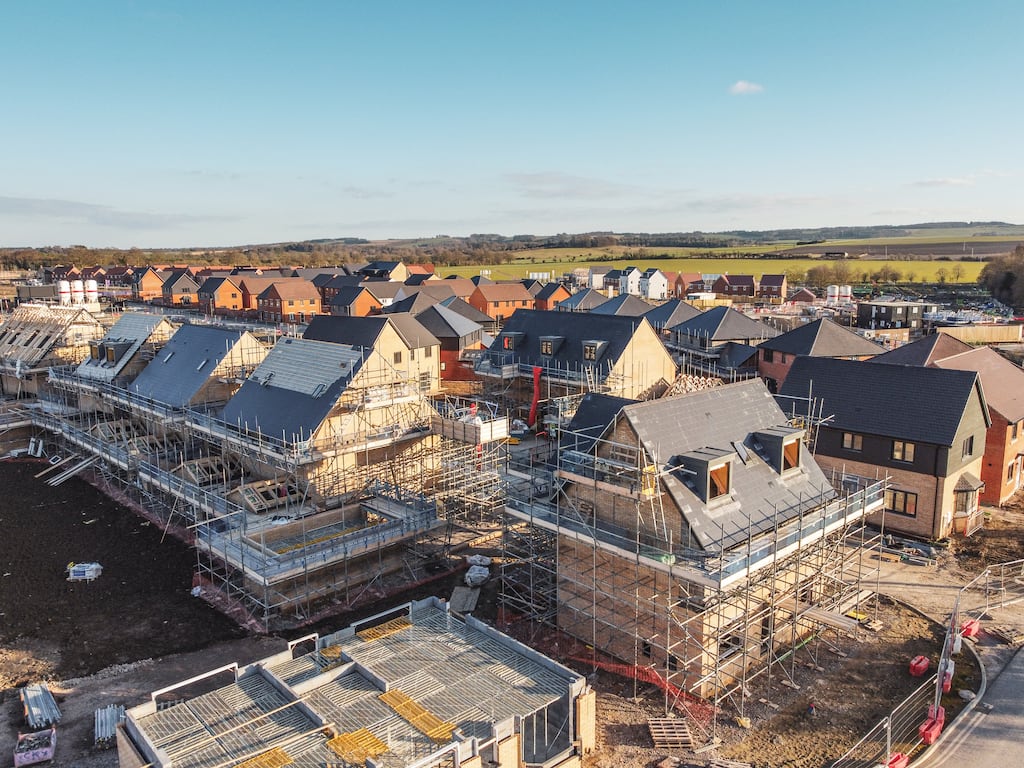As political honeymoons go, the current Fianna Fáil-Fine Gael led Coalition’s has been incredibly short.
Ministers had barely been appointed, had barely found the way to their respective offices ministries, before being blasted for having “conned” the electorate.
The Central Statistics Office (CSO) inadvertently ignited this fiery Baptism by publishing new home completion numbers ironically on the same day as Taoiseach Micheál Martin was sworn in as the country’s leader for a second term.
They showed the Government had missed its housing targets for 2024 with new home completions coming in at 30,300 against a target of just under 34,000.
READ MORE
The fallout would have been bad enough if party leaders in the previous administration plus former Minister for Housing Darragh O’Brien hadn’t promised an eye-catching 40,000 completions in 2024, a figure that now looks woefully out of sync with reality.
That promise has, more than anything else, put the Government on the back foot while prompting accusations that it deliberately deceived the electorate.
But where did it come from?
Not from any of the domestic agencies that keep tabs on construction activity here but from an unexpected source: Deutsche Bank.
The German lender via its research unit Deutsche Numis Research issued a buoyant assessment of Ireland’s residential construction sector last summer, suggesting new home completions in 2024 would be “well in excess of 40,000 units”.
The analysis was at odds with CSO completion figures, which were negative year on year, and data coming from agencies like the Dublin Housing Supply Pipeline, which monitors construction activity in the capital. The Economic and Social Research Institute (ESRI) was forecasting 33,000 would be built in 2024.
[ Housing: Back to the drawing board for the Government or more of the same?Opens in new window ]
Deutsche Bank based its bullish projection on a surge in housing starts over the previous 12 months and the fact that they had doubled in the previous six months.
A short time after, O’Brien, as the then housing minister, wrote to then Taoiseach Simon Harris, then ftánaiste Micheál Martin and Green Party leader Roderic O’Gorman with an update on housing, saying “we have made significant progress on housing with over 110,000 houses built since 2020 when the government was formed”.
“We need to build on this progress and do much more, which is why the revised Housing for All strategy will set out plans to achieve an average of 50,000 homes per annum over the next five years,” he said in the letter seen by The Irish Times.
O’Brien also said that “estimates from independent analysts show we are on track to exceed our housing targets for 2024 and I estimate we will approach 40,000 units in 2024″.
He noted this would be the highest level of completions since 2008. “Included in this will be the biggest social housing build since 1975 with a targeted 9,200 new build units,” O’Brien said.
The only 40,000 estimate for completions that year came from Deutsche Bank and it appears the bank’s researchers were O’Brien’s “independent analysts”.
Armed with this positive narrative, Harris and O’Brien and others went to the electorate saying the State had turned a corner on housing with supply now barrelling towards the 50,000 mark.
Government ministers persisted with the 40,000 projection even when, in late October, the CSO’s third quarter completion figures pointed to a year-on-year contraction.
The agency indicated there were 21,600 new homes built in the first nine months of the year, down from 22,521 in the corresponding period in 2023.
The end-of-year total in 2023 was 32,695, so there was little chance of the 2024 total exceeding that level.
But ministers were in election mode and there was no way the facts were getting in the way of a good story.
They pushed on until the actual out-turn, published in late January, put the matter to bed. The Government has been firefighting since.
The Government’s Housing for All strategy targets 36,100 completions in 2025 and 36,900 in 2026 but a report by consultants Mitchell McDermott suggests housing delivery may fail to reach the 33,000 level achieved in 2023 for at least another three years.
The stagnation reflects the fall-off in institutional investment as a result of higher interest rates
Between 2013 and 2024 total private residential investment here totalled €10.8 billion, an average of €902 million a year. The most recent figures (€1.6 billion in 2022; €597 million in 2023; and €231 million last year) reflect the slowdown in the face of higher interest rates.
To reactivate this channel, the Taoiseach seems to favour reforming the rent pressure zone (RPZ) system, which caps annual rent to 2 per cent or inflation (whichever is lower), and which the industry claims is too stringent and a turn off for investors.
Opposition parties, however, oppose the move, insisting rents are already too high and the primary reason for the fall-off in institutional investment is high interest rises and the high development costs.
“Until these two issues came into play, lobbyists for institutional investors in the private rental sector never even mentioned RPZs,” Sinn Féin housing spokesman Eoin Ó Broin says.
With inflation in abeyance and the euro zone economy flagging, the ECB is expected to preside over a series of interest rate reductions this year (provided US tariffs don’t complicate matters).
Whether this will reignite institutional investment here is perhaps the single biggest question hanging over the sector.
















